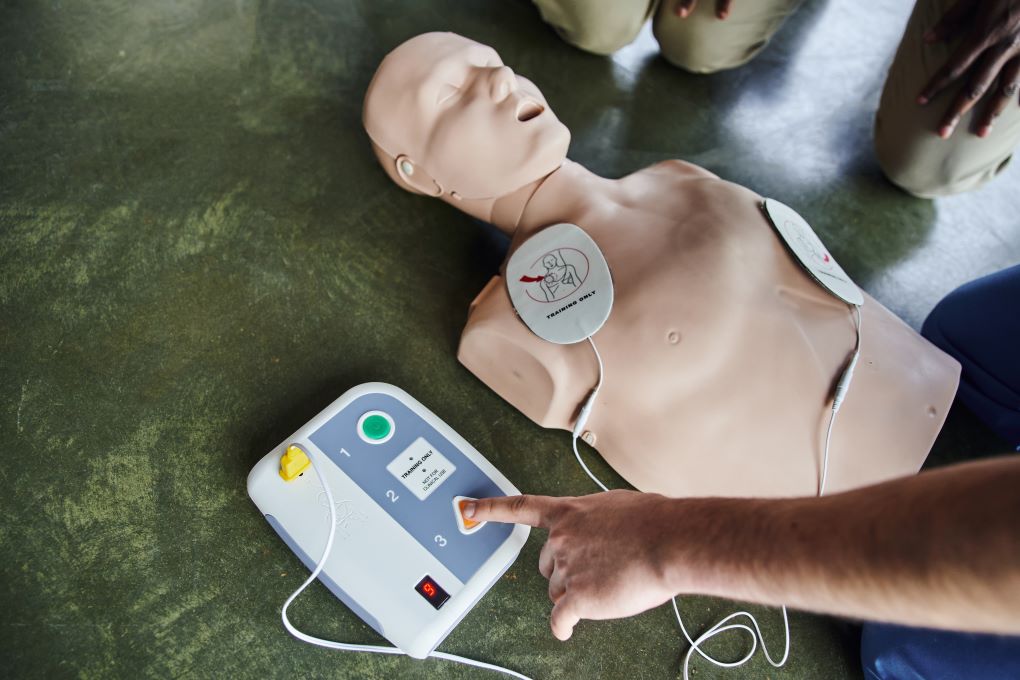Introduction
In times of emergency, the ability to perform Cardiopulmonary Resuscitation (MOUTH-TO-MOUTH RESUSCITATION) can be the distinction cpr refresher training in between life and death. In Australia, understanding the CPR accreditation requirements is essential for any person wanting to come to be a certified rescuer. This detailed guide will look into what you require to understand about mouth-to-mouth resuscitation certification in Australia, including training alternatives, legitimacy of certifications, age-specific standards, and more.
CPR Accreditation Requirements in Australia: What You Required to Know
What is CPR?
Cardiopulmonary Resuscitation (CPR) is an emergency treatment performed when someone's heart quits defeating or they quit breathing. It combines upper body compressions with rescue breaths to keep blood circulation and oxygenation till specialist medical aid arrives.
Why is CPR Important?
The critical importance of mouth-to-mouth resuscitation can not be overstated-- it conserves lives. According to data from the Australian Resuscitation Council, instant CPR can double or triple a sufferer's possibility of survival after cardiac arrest.
Understanding mouth-to-mouth resuscitation Certification
To come to be licensed in CPR, people should undertake training with recognized companies. Qualifications generally consist of hands-on abilities practice and theoretical understanding concerning heart emergencies.
Types of mouth-to-mouth resuscitation Training Available
Basic Life Support (BLS) vs. Advanced Life Support (ALS)
- Basic Life Support (BLS) focuses on essential techniques including upper body compressions and rescue breaths. Advanced Life Assistance (ALS) covers more complicated procedures such as innovative airway administration and medication administration.
Online vs. In-Person Training
- Online mouth-to-mouth resuscitation certification offers flexibility but may lack hands-on experience. In-person classes supply useful abilities practice essential for effective reaction in emergencies.
CPR Accreditation Process
Choosing a Training Provider
When seeking training, make certain that your selected company is certified by respectable organizations like the Australian Resuscitation Council or St John Ambulance.
Course Duration and Content
Most standard programs last about 4 hours and cover:
- Adult CPR techniques Use of Automated External Defibrillators (AED) Recognition of cardiac arrest signs
CPR Certificate Validity
How Lengthy Does a CPR Certificate Last?
Typically, a mouth-to-mouth resuscitation certificate remains valid for three years before requiring revival. It is essential to stay upgraded with the current methods and guidelines.
Renewing Your Certification
Renewal often includes taking a refresher course that reviews necessary abilities and updates attendees on any kind of adjustments in guidelines.
Age-Specific CPR Standards Australia
Adult vs. Child vs. Infant mouth-to-mouth resuscitation Techniques
Different age call for customized strategies:
- For grownups, focus on compression deepness and rate. For youngsters, readjust compression depth based on size. Infant CPR technique entails gentle compressions and cautious ventilation.
Infographic: Age-Specific Techniques
|Age Group|Compression Depth|Ratio|| -----------|-------------------|-------|| Adults|5-6 cm|30:2|| Kids|4-5 centimeters|30:2|| Infants|1.5 cm|30:2|
CPR Devices in Australia
Essential Gear for Efficient Response
Having access to appropriate CPR equipment help successful resuscitation efforts:

Using AED with mouth-to-mouth resuscitation in Australia
An Automated External Defibrillator can significantly boost survival prices when used alongside CPR-- recognizing how to utilize an AED efficiently is crucial for every rescuer.
Common Myths Concerning CPR
The Misconception of "Mouth-to-mouth Resuscitation Always Restarts Heart"
Many think that doing mouth-to-mouth resuscitation will constantly reactivate a heart; nonetheless, this is misleading-- mouth-to-mouth resuscitation maintains blood flow till professional help gets here however does not ensure revival.
Debunking Various other Misconceptions
Other misconceptions consist of misunderstanding compression depth or the efficiency of rescue breaths versus hands-only methods; education plays an essential duty in eliminating these falsehoods.

Special Circumstances in Carrying out CPR
CPR for Drowning Victims
Drowning victims typically require immediate rescue breaths because of their one-of-a-kind circumstances; understanding this context boosts end results significantly.
Sports-Related Cardiac Arrest Procedures
Recognizing indications certain to professional athletes helps -responders act rapidly-- education regarding sports-related cardiac occurrences is up-to-date express cpr training vital for instructors and instructors alike.

Workplace Emergency Plans
Establishing Preparedness at Workplaces
Every office should have a detailed emergency plan that includes arrangement for emergency treatment training like cpr and first aid combo programs for employees.
Training Staff members Effectively
Regular training sessions make certain team are prepared-- not just does this secure employees but additionally improves total office safety and security culture.
Frequently Asked Inquiries (FAQs)
Q1: Just how do I discover neighborhood mouth-to-mouth resuscitation classes?
A1: Local recreation center or healthcare facilities usually offer courses; web sites of organizations like St John Ambulance supply listings as well.
Q2: Can I get my certification online?
A2: Yes! Several certified organizations supply online cpr certification, but ensure it includes hands-on technique aspects as well.
Q3: Is there a distinction in between grown-up and child certifications?
A3: Yes! Training courses particularly tailored for babies and children concentrate on age-specific techniques which vary cpr from those taught for adults.
Q4: Exactly how frequently ought to I restore my certification?
A4: Typically every three years; nonetheless, staying upgraded annually with refreshers is very suggested provided evolving guidelines.
Q5: Are there any type of particular legislations regarding obligatory training?
A5: While guidelines might differ by state or region, numerous work environments are called for by regulation to have actually educated very first responders available on-site during working hours.
Q6: What data support the effectiveness of CPR?
A6: Research studies show that instant bystander-administered mouth-to-mouth resuscitation can raise survival prices from cardiac arrest dramatically-- often doubling possibilities of client recuperation contrasted to no treatment at all.
Conclusion
Understanding the intricacies of the CPR accreditation needs in Australia empowers people across various fields-- from health care specialists to daily citizens-- to act emphatically throughout emergency situations. With proper training, recognition of age-specific standards, understanding concerning devices such as AEDs, and familiarity with typical misconceptions surrounding resuscitation initiatives, one can absolutely make a difference when it matters most. Whether you're taking into consideration enrolling in local classes or exploring on-line alternatives like online mouth-to-mouth resuscitation certification, bear in mind that each action taken in the direction of ending up being certified adds towards conserving lives-- a worthy quest indeed!